The Sphinx sits in attentive repose, observing the passersby across millennia. She is neither wanton nor engrossed. Her stillness is not vacancy but profound presence; undisturbed and equally unimpressed with the passage of time. The secrets she guards are withheld to all, offering only riddles to those who dare approach in hopes of a glimpse into the wellspring of her ancient knowledge. Only the perceptive may pass.
The Vestal Virgin stands at the threshold of sacredness, tending the fire that fuels Rome's eternal pulse. Her life is a ceremonial offering and her purity the paradoxical gift, guarded and inviolate. She is the embodiment of an ancient covenant—her essence sealed within the sacred flame, unconsumed by time, impervious to vulgarity. She is both the sacrifice and its keeper, untouched by the hands of those who would seek to claim her for their own.
The Siren sprawls her languid body across the water, curling into a backward summersault, and then assuming a fish-like shimmy. The sea is her lover and his liquid caress is muse for her song, which falls from her lips as the enchanting emanation of her vibrant being. Many have succumbed to her bewitching voice, drowning in the allure of a beauty that exists only at the intersection of life and death. Yet, her true home, her realm, remains forever beyond the reach of man, hidden in the depths where no mortal can follow.
The Nature of Feminine Mystique
The Sacred Feminine is the eternal current that moves beneath the fabric of all things; a hidden pulse reverberating our most ancient song. Before creation, before name, form, or concept, She exists as the deep void of unfathomable No-thing-ness that precedes the Everything. Her essence of unmanifest being eludes even the mind's attempt to name it, for she predates thought.
All feminine archetypes originate in, and perpetuate, this quality of concealment. The female body, as an expression of this energy, is not mere flesh, but a landscape of secrets; a map to forgotten places that remain unseen, veiled in their own sacred geometry. And so, within this continuity innate to all things, it stands that the sacred feminine’s highest expression is made manifest in the quality of mystique; the veiled, indirect energy of evocation and obscuration. Feminine aura is the realm of private rites and inner chambers, of allure that draws you in slowly and protects its sacredness from the vulgarity of knowing things to death. Mystique is not artifice; it is essence, that is expressed in woman through her curatorial choices—the subtle cues of movement, adornment, and refinement—which become a natural extension of her lived experience and inner worlds. At its core, womanhood is an exploration of the diaphanous—of light and shadow, and in knowing when and how much to reveal.
The priestess does not open the temple doors to everyone. Her essence cannot be prostituted for likes, validation, or mass consumption. Mystique does not explain itself nor does it put itself up for sale. Those who seek her in the marketplace of image will only find fragmented illusions and reflections of their own projections. They will seek her out with hungry eyes, dissecting her form in a desperate attempt to understand her essence. But she will elude them. Therein lies the power: the recognition that beauty is never fully revealed nor fully consumed, but remains just beyond the reach of the mortal hand.
The Psychology of Overexposure Culture
In this post-sanity era of digital hysteria, society is addicted to exposure as a form of currency. Women are encouraged to share their trauma, their bodies, their morning routines, and every source of their allure. If they refuse, they are seen as “withholding” or "not relatable." That which cannot be consumed, revealed, duplicated, or acquired is then seen as a threat by those who are relying on a watered-down social mean to disguise their inherent mediocrity. In the flattening of culture, any natural hierarchies (such as in taste, originality, talent) that naturally arise through expression of truth and essence, are immediately flagged and demonized. This psychological positioning manifests in countless ways, notably in the demand that women’s curated selves placate the hungry mob through overexposure, i.e. a woman presents herself in a desirable way and, rather than aspire to that standard through methods of self-actualized ingenuity, the insecure demand that the curated woman be "forced to share” the sources of her mystique or taken down for her reticence. Women who "gatekeep"—a derogatory term contorted into cultural villainy—are now publicly shamed for having the audacity to protect their sacred interior. This punishment is a crude form of social regulation: a mass demand that all women democratize their essence so no one feels excluded. It is mediocrity's humiliation ritual against natural hierarchical expression. And as usual, the patriarchy has outsourced its work so that women are now policed laterally by the “sisterhood” of “girl’s girls.”
When identity is purchased (via fads, logos, fast fashion), those unable to create identity organically become hostile towards those who do. The "gatekeeper" becomes an obstacle to their ease of consumption. We’ve been sold the idea that overexposure is authenticity but this could not be further from the truth. Genuine authenticity often requires privacy and discernment. To say "not everything is for you", which is now seen as arrogant, in actuality is a healthy boundary. But herein lies the failsafe beneath all things that are resolutely true: they reveal with surgical precision what is false.
Mystique offends because it reminds the masses that allure is earned through resonance, not granted through demand.
A woman embodying true mystique withholds not out of pettiness or ego. It is not about being mean or better than—it is about sovereignty. About choosing to cloak oneself in varying degrees of opacity in a world that demands transparency—not for connection, but for extraction. It should be very clearly stated here: “women owe you nothing.” This mantra, which has become so popularized in the assertion against the unceasing hunger of the male gaze, applies equally to other women as well.
Mystique and The Male Gaze
The feminine has long been defined by the desires and projections of men. The mystique of the woman, once a reflection of her autonomy and depth, has been assigned to her by a patriarchal gaze—curated, wrapped, boxed, marketed, and presented to other men as an object of desire—not by her own volition, but by a world that insists she remain a canvas on which the fantasies of others are painted. She has been constructed not for herself, but for others to desire, possess, and consume. She is not seen for herself but for what she reflects in the eyes of the observer. The very essence of her being, once a vibrant force of creation, has been contorted into a passive plaything of desire, a vessel to hold men’s longing, to be understood only through their eyes.
Even the idea that a woman must maintain her mystery is an assigned mystique—a psy-op designed to keep her imprisoned within a gilded cage of projection, yet another way in which her authenticity is held hostage and she then, condemned to never being fully known. She will play the game of masks and shadows, living out an imposed performance, which becomes a self-fulfilling prophecy—for as long as she is defined by the gaze of other, she will remain imprisoned by it—unseen, unfulfilled, and ultimately silenced. She is forever the mirror, never the one who realizes the power of her own attention.
To break free of this imposed mystique is to reject the narratives that have been written by others and to claim our own. It is to reveal the truth of our own experience, not as a reflection of someone else’s fantasies, but as a dynamic force in the world, revered for its own sake, and seated on the throne of unshakable self-sovereignty. In liberating oneself from the reflections of others, you become the untold story—one that is not meant to be understood or anticipated, but rather revealed as the cosmic reflection of one’s true soul. It is here, in this space, that the sacred feminine becomes untouchable in the most radical sense: she and the force of creation are one, free from the need of a mirror, and free from the mental shackles of both male desire and female envy.
Women, like worlds and the cities within them, are layered in ruins and spells—where every stone conceals an untold story. She too is built in strata; epochs of passion, conquest, silence, and rebirth hidden beneath what is shown. Her mysteries do not yield to maps or names. They unfold only in dreamlike succession, when eyes are closed and reverence eclipses desire. She is the resonance of what is withheld, the hum of temples sealed to all but the initiated. To touch her is not to trespass, but to pass through oneself to find, in that silent crossing, that the true city was always hidden underfoot. She withholds, not out of cruelty, but because her beauty was never meant to be devoured in haste—only savored by those who kneel at the altar of the unseen.
And so, as the world tumbles toward its obsession with visibility, the sacred feminine remains the keeper of the unseen. Visibility within this world is an afterthought given over to only in moments of playful entertainment, for she knows the true power lies in that primordial darkness—forever unnamed, undefined, and eternally enigmatic. This is the true identity, and she is its living sigil.
The dawning of the new mystique is not about hiding, but about holding. Holding your own gaze. Holding your own counsel. Holding your sacred interior without apology. A woman who shares nothing but radiates everything—that is the figure who unsettles the cosmic algorithm.
Here’s to being art, not content. And allowing others to be the same.




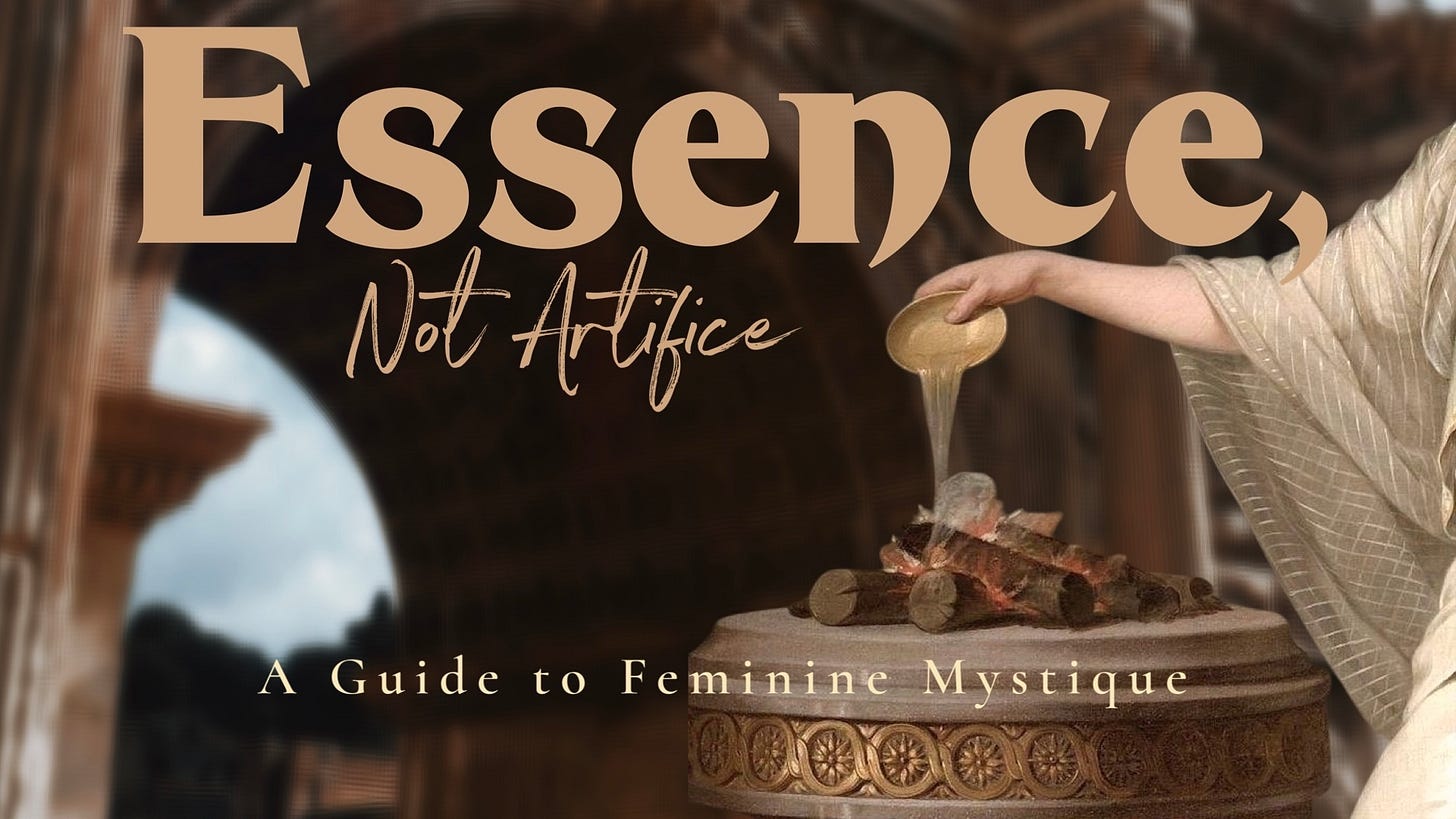
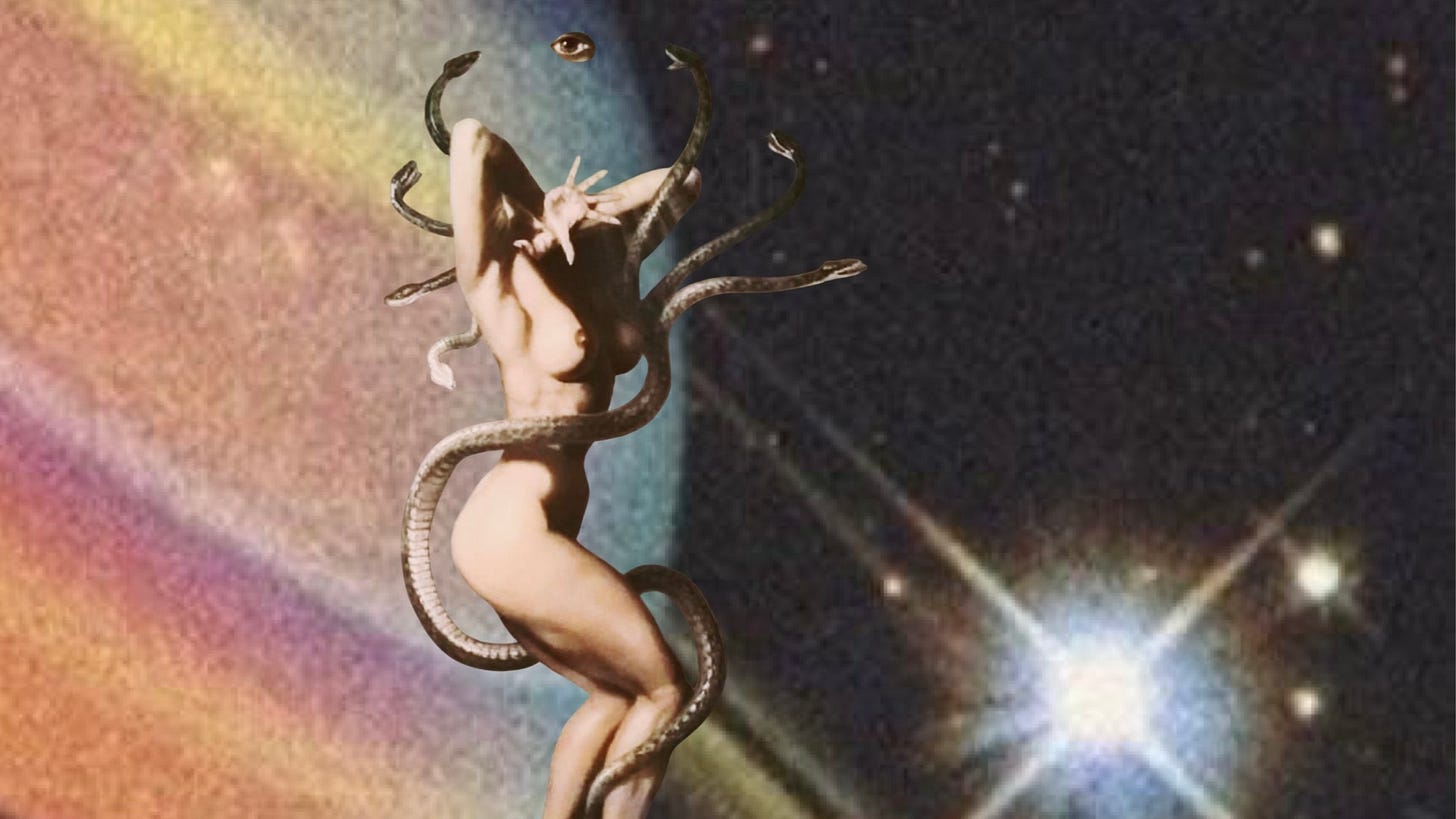
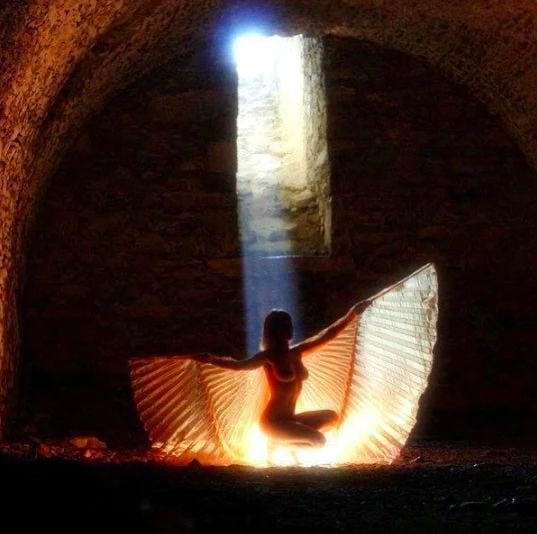
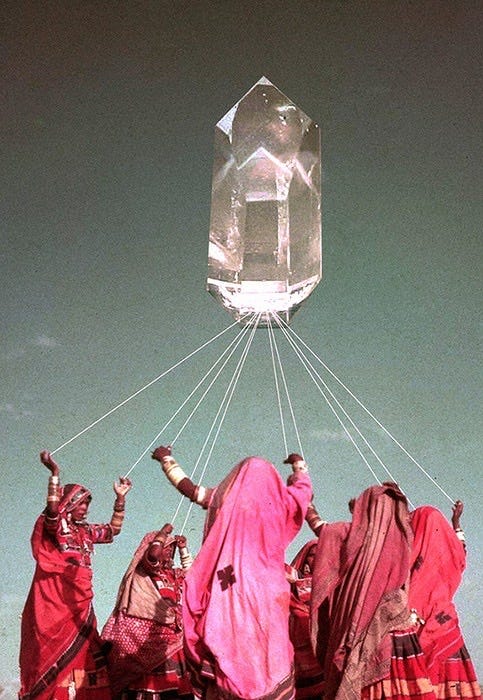
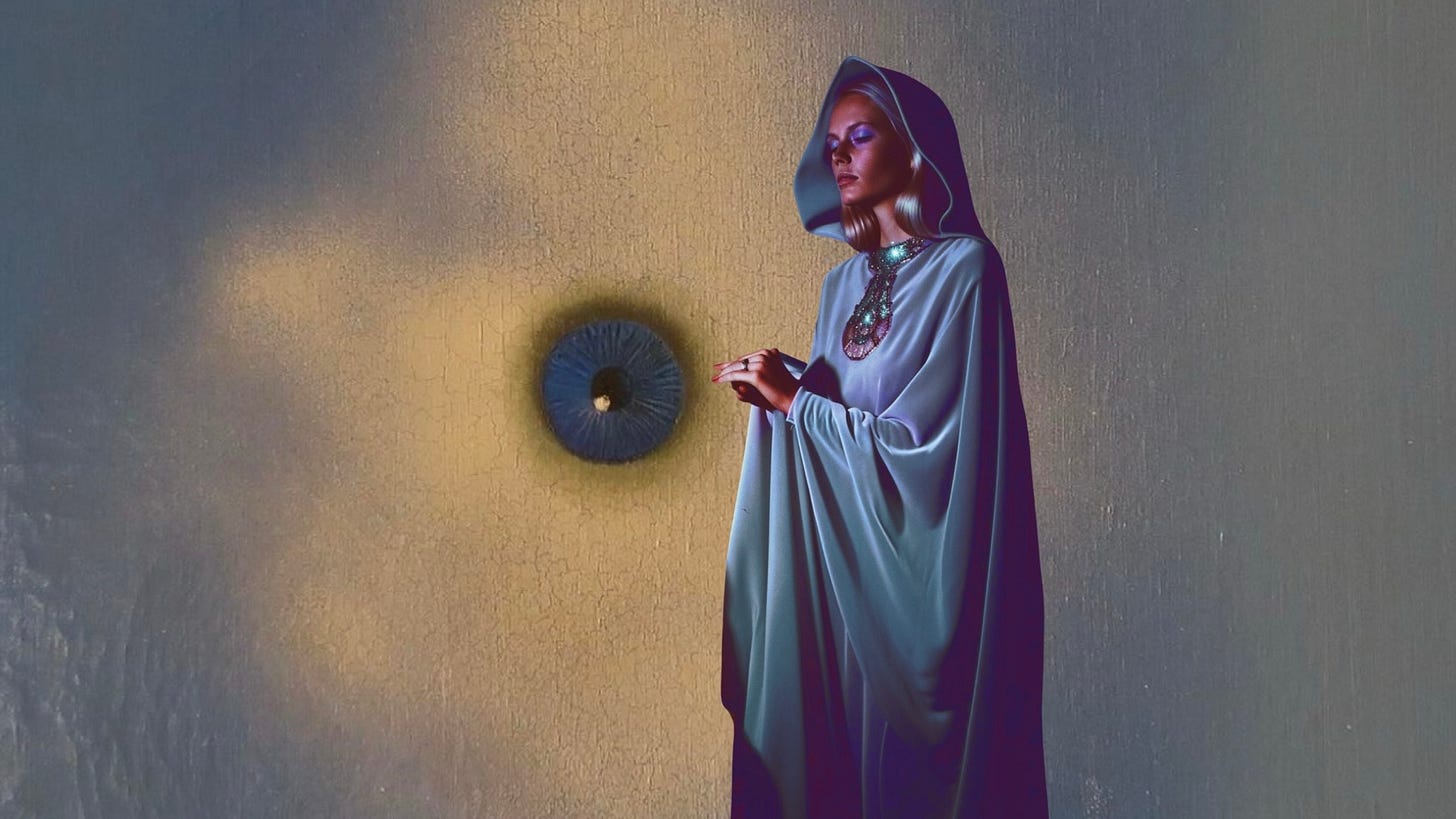
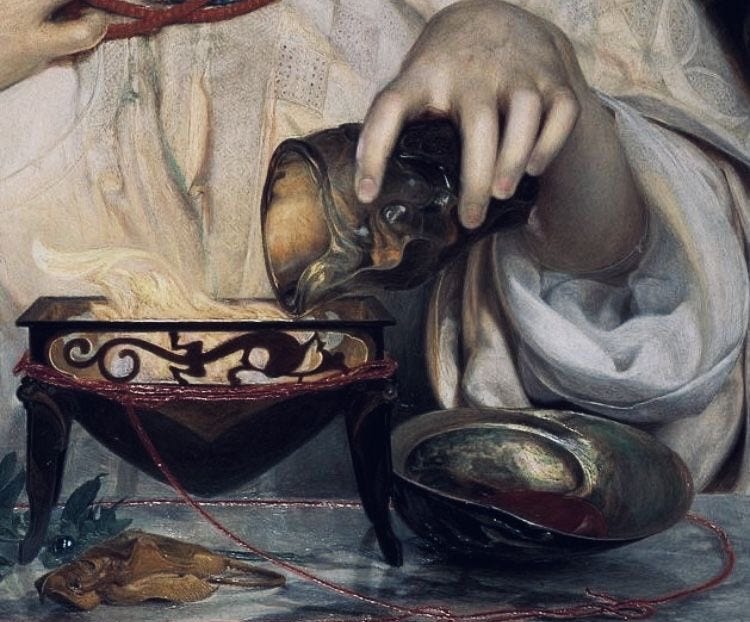
Yes to all this!! Veiling and unveiling, discernement, integrity... my favourite things!
Thank you so much Jazmine, right on time. Love <3